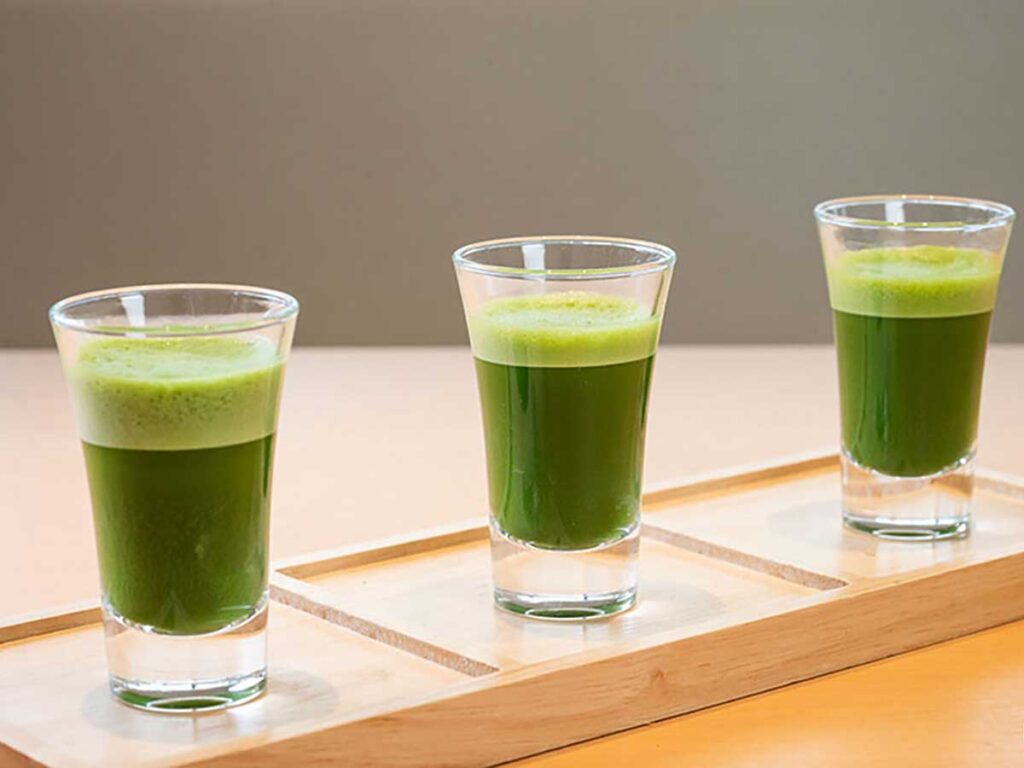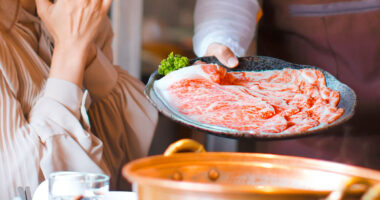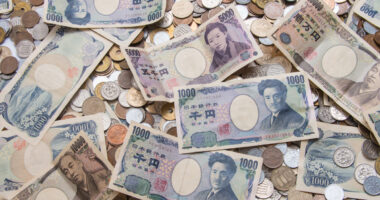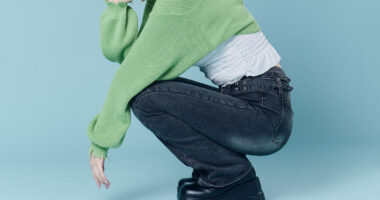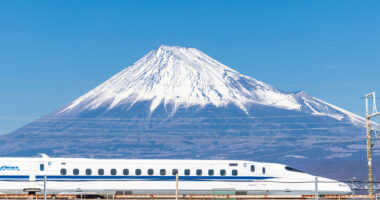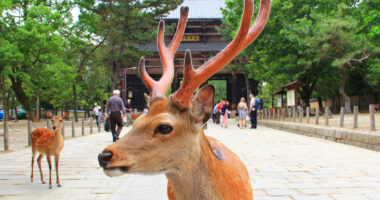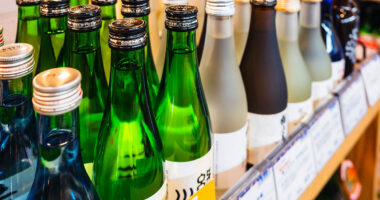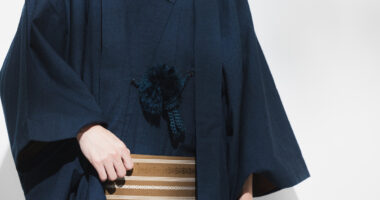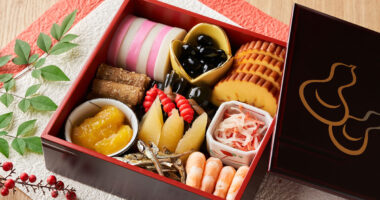Hōjicha (“roasted Japanese green tea”) and matcha (“stone-milled powdered green tea”) both come from the tea plant, yet they offer completely different charms.
Matcha is known for its vivid green color and deep umami, playing a central role in the world of tea ceremony. Hojicha, by contrast, is beloved for its roasty aroma and gentle flavor in everyday life. This article explains how they differ—from cultivation and processing to taste and health-related components.
Whether you’re choosing between the two or simply want to understand them more deeply, you’ll find the essentials here.
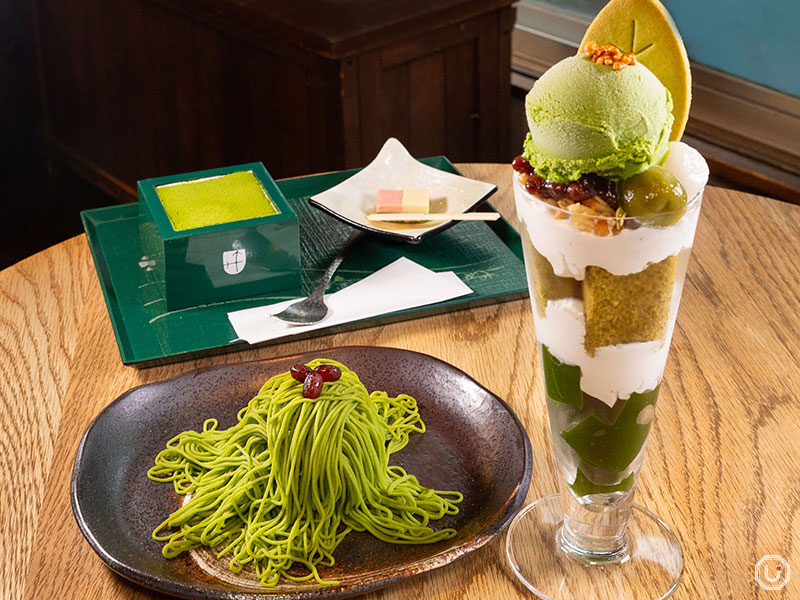
Matcha sweets at “Ujien Urasando Garden”
Key differences and characteristics
Hojicha and matcha differ fundamentally in leaf treatment and processing. Understanding these basics clarifies why their flavors and colors diverge so much.
Core traits
Matcha features a vivid green color and concentrated umami, ranging from bright jade to deep green, and is an ultra-fine powder. By contrast, hojicha is noted for its toasty aroma and naturally lower caffeine, appears brown, and is stored as roasted leaf.
When brewed, the visual difference is striking: matcha makes an opaque, richly green bowl, while hojicha brews a clear, warm brown liquor—visible proof of their contrasting methods and components.
Cultivation and processing compared
To grasp the differences, compare each step from field to cup. Long traditions shape both teas, and those choices determine the final flavor and quality.
How matcha is grown and made
Matcha starts with shaded cultivation, then steaming, drying, and stone-milling. For around 20 days after the new shoots emerge, tea gardens are covered with shade cloth or straw. Reduced sunlight boosts chlorophyll and preserves the amino acid theanine, enhancing umami.
After harvest, leaves are steamed to halt oxidation, then dried without rolling to make tencha. Stems and veins are carefully removed, and only the leaf tissue is stone-milled to a fine powder. As a benchmark, traditional mills yield about 40 g per hour (actual output varies by mill and grade), producing matcha’s signature silky mouthfeel.
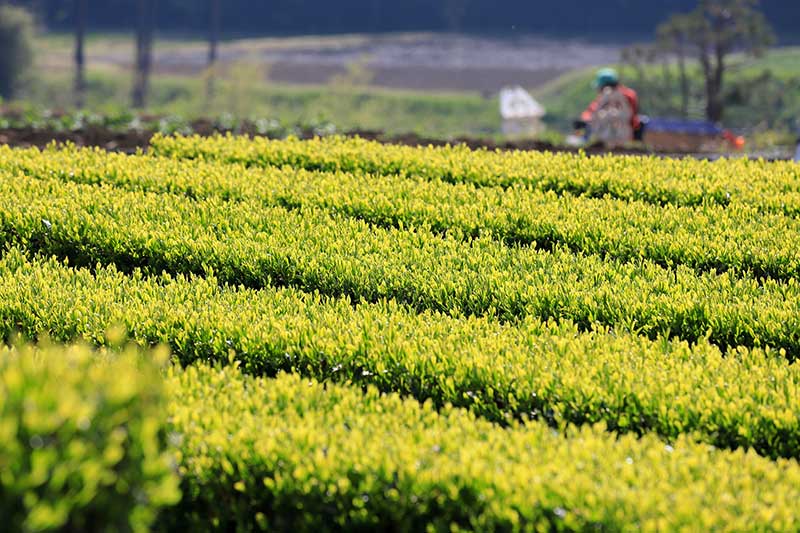
Image for illustrative purposes
How hojicha is made: roasting
Roasting is the heart of hojicha: leaves are roasted around 150–200 °C to develop its distinctive aroma and flavor. Producers often use bancha (late-season everyday green tea), sencha stems (kukicha, stem tea), or older leaves, heating them evenly in a dedicated roaster. Roast times range from several to a dozen-plus minutes, adjusted to the material and desired profile. Lower, longer roasts emphasize gentler sweetness; higher, shorter roasts highlight toasty notes. Roasting reduces perceived bitterness/astringency and generates aromatic compounds such as pyrazines, which define hojicha’s nutty, caramel-like bouquet.
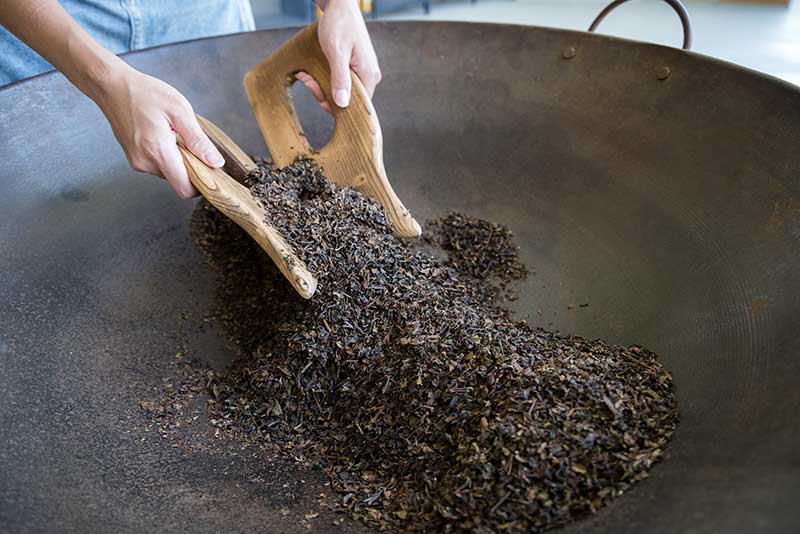
Image for illustrative purposes
Leaf varieties and grades
Matcha commonly uses cultivars such as Yabukita, Asahi, and Okumidori—chosen for traits suited to shaded growth and stone-milling. Grades are strictly managed, from tea-ceremony grade to culinary grade, depending on use.
Hojicha has more flexibility in raw material: bancha, kukicha (stems), and older leaves are all used. This helps keep hojicha accessible for daily drinking.
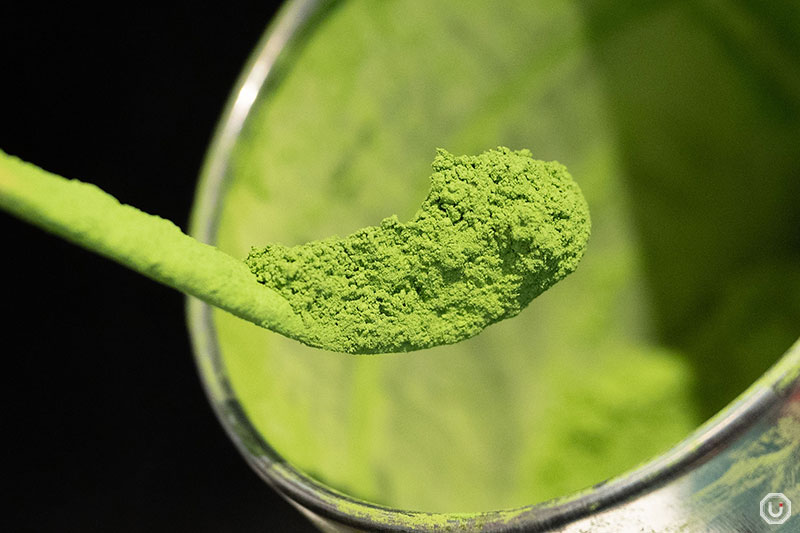
Matcha used at “ATELIER MATCHA”
Sensory differences: taste, aroma, and color
The most tangible contrasts show up in the cup: how they taste, smell, and look—all rooted in processing and composition.
Matcha’s flavor and aroma
Matcha delivers concentrated umami, light natural sweetness, and a creamy mouthfeel, with a vivid green appearance. High-quality matcha emphasizes depth over bitterness, offering layered, elegant flavors.
Its aroma can evoke sea greens with subtle floral lift. When whisked, the rising fragrance is part of the experience. The ultra-fine texture gives a smooth, almost velvety impression.
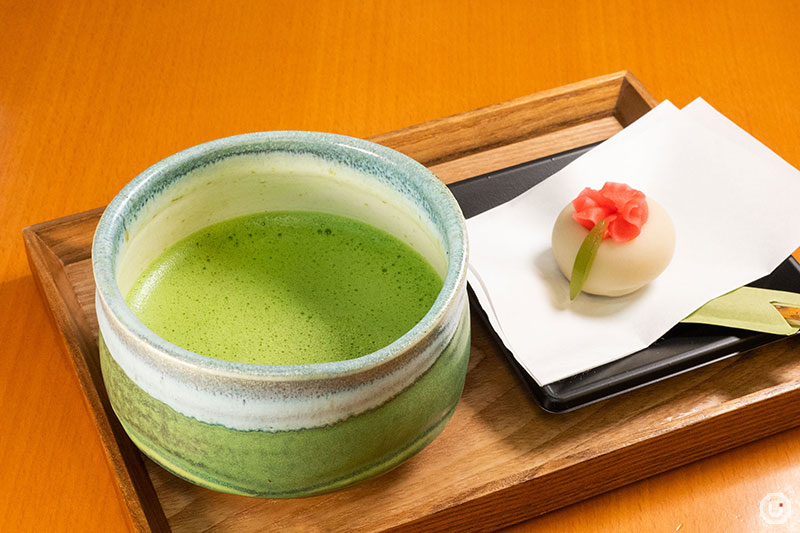
“Kaminari Issa’s Special Matcha served with Jōnamagashi (Premium Japanese Sweets)” at “Kaminari Issa Asakusa Honten”
Hojicha’s flavor and aroma
Hojicha features nutty, caramel-like roast notes with mellow sweetness and very little bitterness. Its toasty fragrance is distinct from coffee and widely perceived as relaxing. The cup is a clear, warm brown that invites easy sipping.
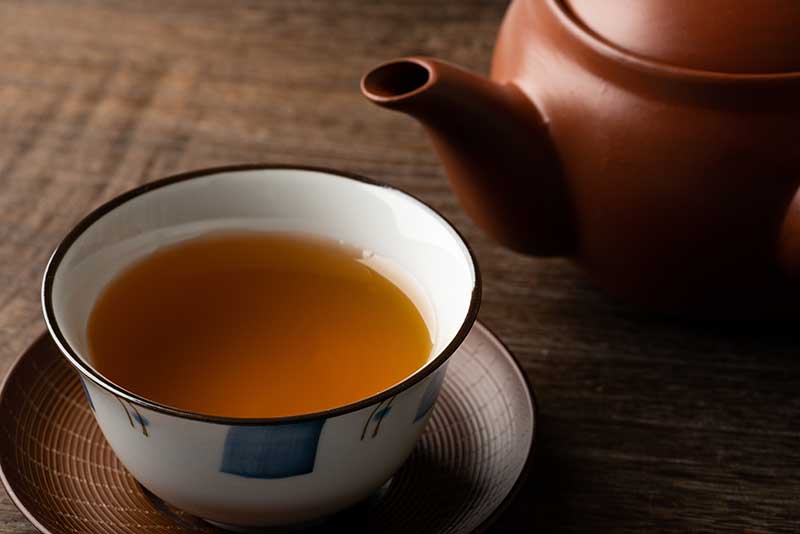
Hojicha (photo for illustrative purposes)
Mouthfeel and finish
Matcha, being a suspension of fine powder, feels slightly viscous and leaves a long, umami-rich finish. Hojicha drinks light and clean, with a crisp aftertaste that suits multiple cups.
Temperature matters: matcha shows best around 70–80 °C to avoid excess bitterness, while hojicha is forgiving even with boiling water.
Caffeine and key components
Caffeine levels
Hojicha generally contains less caffeine than matcha. Because matcha is the whole leaf in powdered form, it typically delivers more caffeine per serving than brewed green tea; exact amounts vary by grade and preparation. Hojicha tends to be lower overall—partly because it often uses mature leaves and stems and is brewed lightly. Roasting also reduces bitterness, and some caffeine may be reduced during roasting.
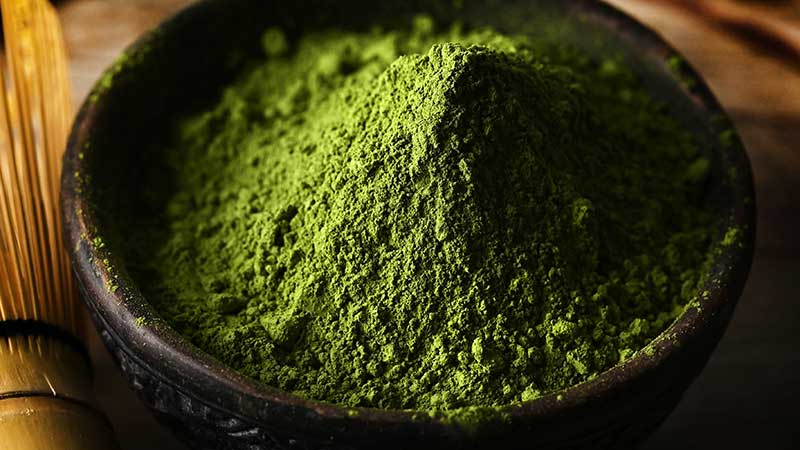
Photo for illustrative purposes
Antioxidants and other constituents
Matcha is rich in catechins—especially EGCG—with strong antioxidant activity; hojicha’s roasting reduces these catechins, though it remains an easy-drinking, after-meal favorite. Research associates higher catechin intake with potential health benefits. Many people enjoy hojicha after meals because it’s gentle on the stomach and easy to drink.

Photo for illustrative purposes
When and how to enjoy them
Each tea shines in different situations. Choosing based on time of day and purpose helps you get the most from both.
Best times of day
Many people reach for matcha (or a matcha latte) in the morning or during focused work, and prefer hojicha (or a hojicha latte) from afternoon into the evening. The matcha combo of caffeine and theanine is associated with calm focus, while hojicha’s low caffeine suits unwinding later in the day.
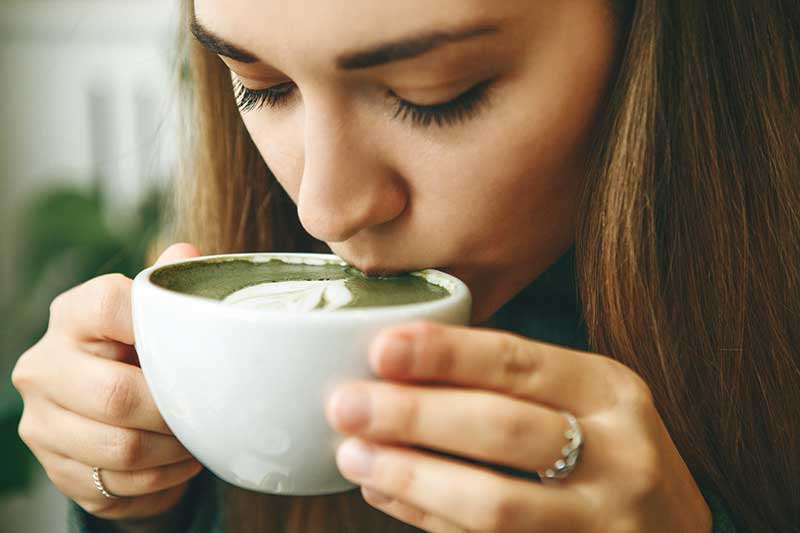
Photo for illustrative purposes
Cafés and gifting
Matcha offers a showpiece experience—from tea-room service to modern lattes and desserts that look great on camera. Hojicha, with its easygoing profile, appeals to a wide range of ages, and hojicha lattes are trending at cafés abroad as a mellow alternative to coffee.
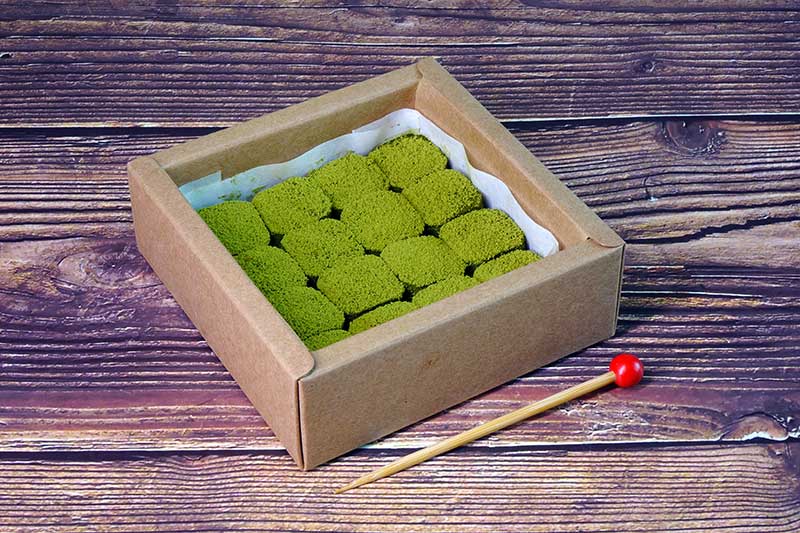
Photo for illustrative purposes
Pairing with food
Matcha pairs classically with wagashi, and also complements ice cream, chocolate, and baked sweets—the gentle bitterness and umami sharpen sweet flavors. Hojicha pairs broadly with meals; after richer dishes, its clean finish refreshes the palate and brings out savory notes in both Japanese and Western foods.
Preparation and modern takes
Whisked matcha and modern recipes
Enjoy matcha as usucha (thin tea) or koicha (thick tea), or in modern forms like matcha lattes, sweets, and smoothies. For thin tea, whisk about 2 g of matcha with ~60 ml water at 70–80 °C (158-176 °F), moving the chasen briskly in an “M” motion. For thick tea, use roughly double the matcha and a small amount of water to knead a luxurious paste.
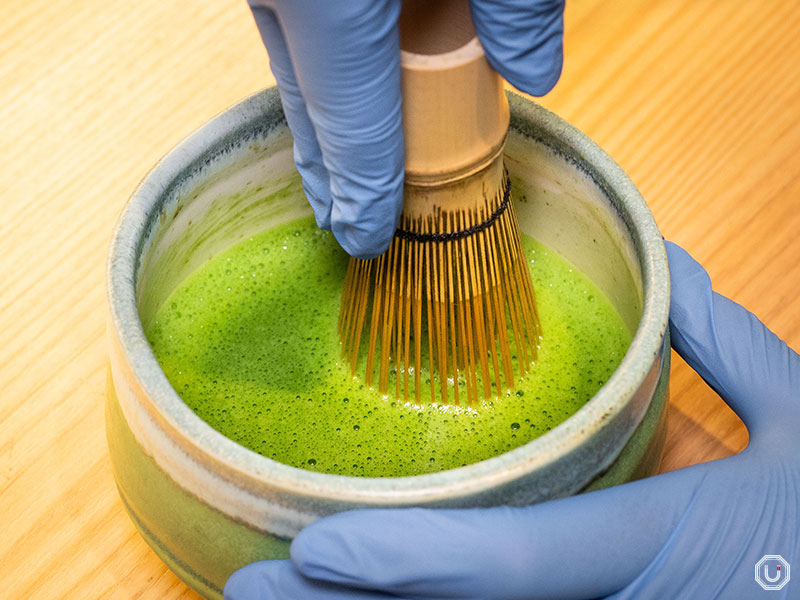
Matcha is whisked to order at “Kaminari Issa Asakusa”
Modern takes include matcha lattes, which soften bitterness with steamed milk, and desserts like matcha ice cream, chocolates, and cakes.
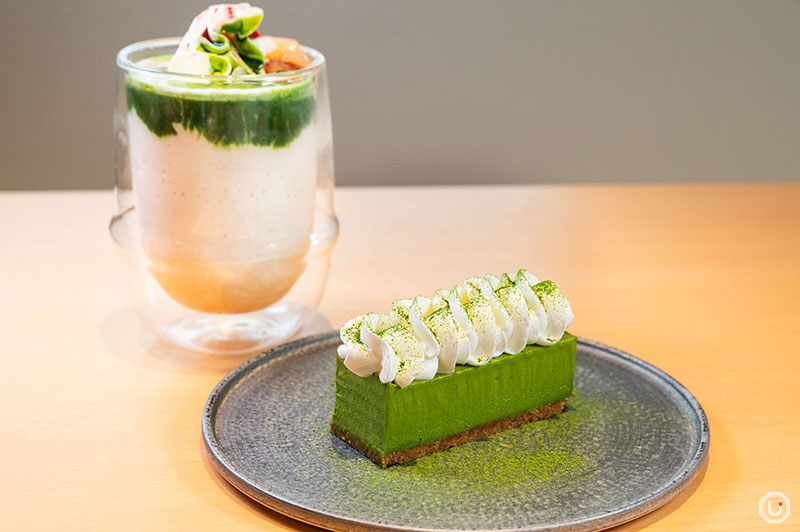
“MATCHA Peach Melba” (left) and “MATCHA Gâteau” (right) at “ATELIER MATCHA”
Brewing hojicha and easy variations
Hojicha is simple to brew with boiling water, and adapts to lattes, iced tea, shochu highballs, and desserts. For a straightforward cup, use 5–6 g leaf to 200 ml boiling water and steep about 30 seconds before decanting. Because it’s low in bitterness, hojicha is forgiving and fun to experiment with.
For a hojicha latte, brew a concentrated cup and add warmed milk; the roasty aroma and milk’s creaminess pair beautifully, and the low caffeine makes it a popular choice for kids and caffeine-sensitive drinkers. In summer, iced hojicha lattes—chilled over ice—are especially refreshing.
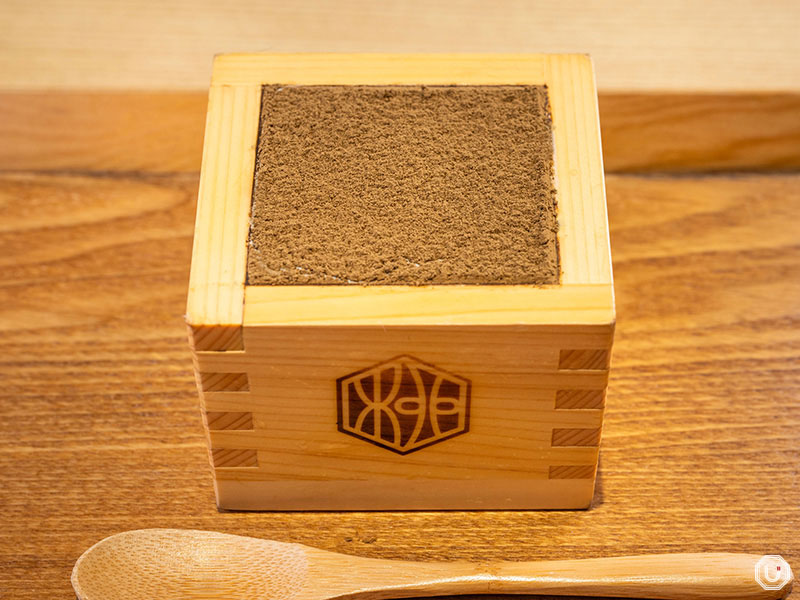
“Hojicha Tiramisu” at “Yanagi Chaya Asakusa”
Into the kitchen
Both teas shine in cooking. Matcha salt seasons tempura and fish; matcha can be kneaded into bread or pasta, or used to make matcha soba for a Japanese-Western twist.
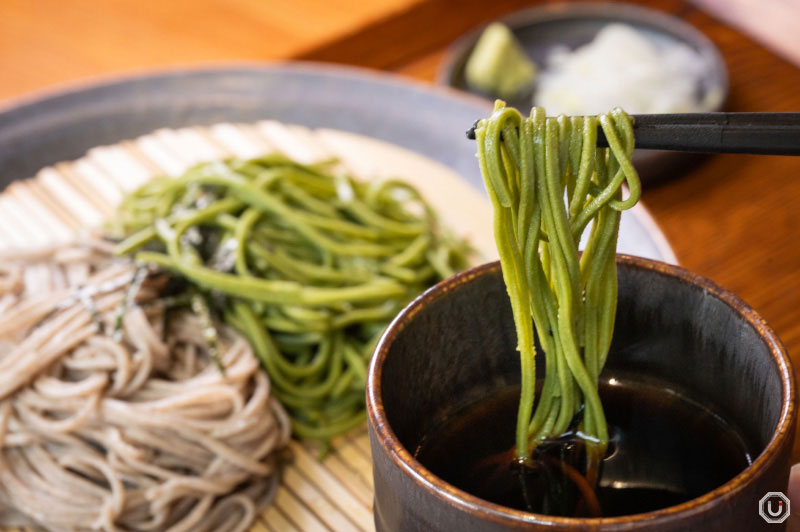
Soba noodles kneaded with matcha at “KYOTO SARYO SUISEN Shinjuku”
Hojicha’s roastiness lends itself to light smoke-style aromatics, powdered-leaf seasonings, and desserts like hojicha pudding and jelly.
- Matcha uses: thin tea, thick tea, lattes, desserts, seasoning
- Hojicha uses: hot tea, iced tea, lattes, cocktails, desserts
- Shared treats: ice cream, chocolate, baked goods
- Creative cooking: fusion dishes, seasonings, sweets
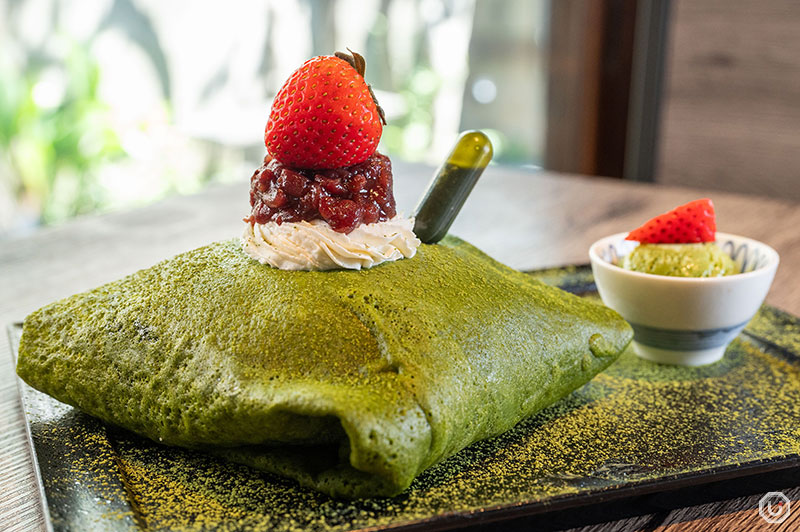
“Crepe Pancake Matcha” at “Riz Labo Kitchen”
Summary
Drawn from the same plant but processed very differently, hojicha and matcha deliver distinct experiences. Matcha’s shaded growth and stone-milling yield vivid color, concentrated umami, and higher caffeine and catechins; hojicha’s roasting creates a toasty, mellow cup that’s low in bitterness and typically lower in caffeine.
Both have traditional and modern expressions—from tea-room bowls and lattes to sweets and savory dishes. Choose based on your taste, time of day, and occasion to get the most from Japan’s rich tea culture.
